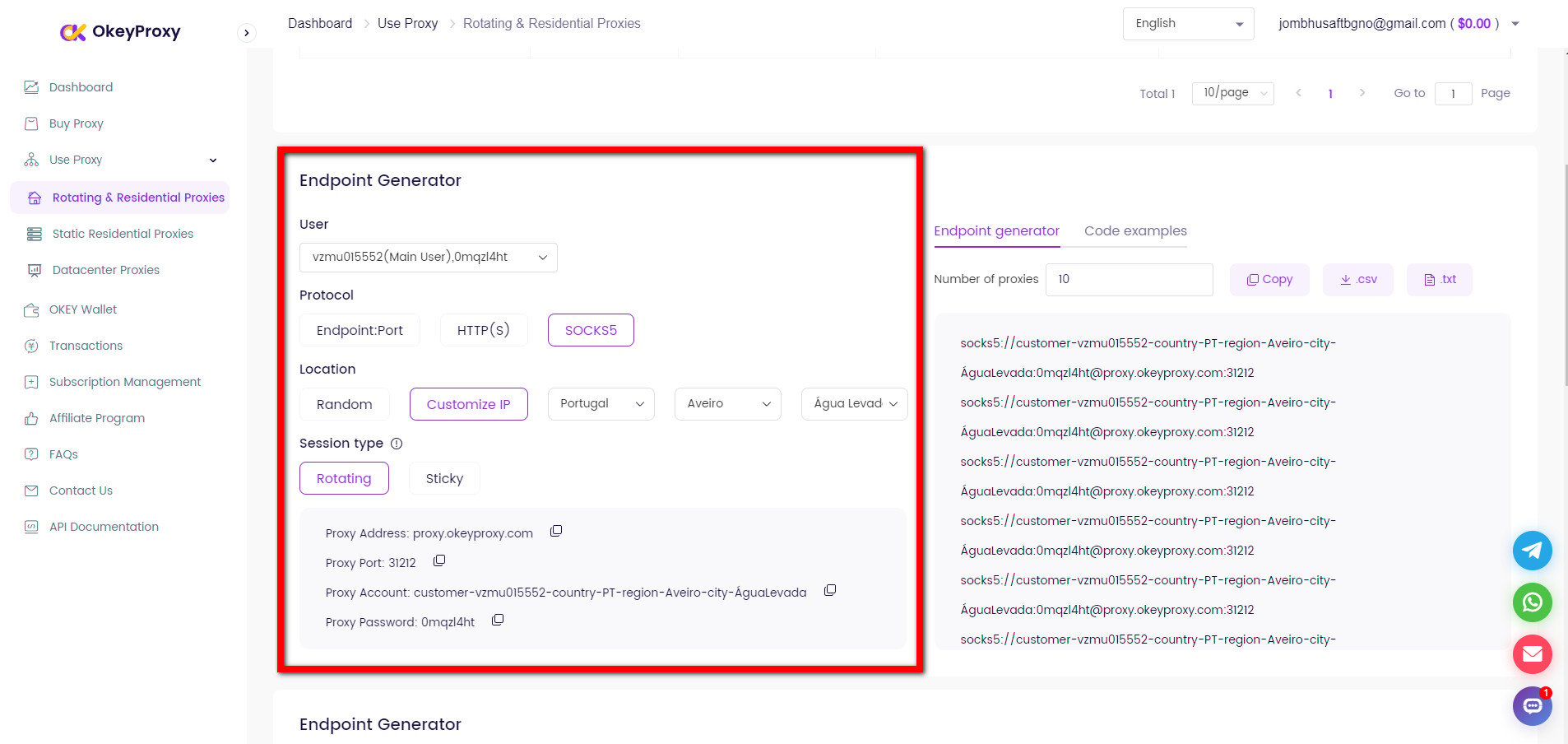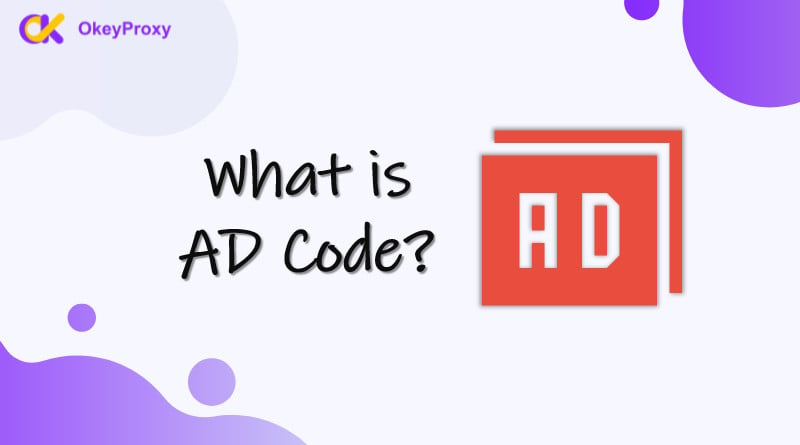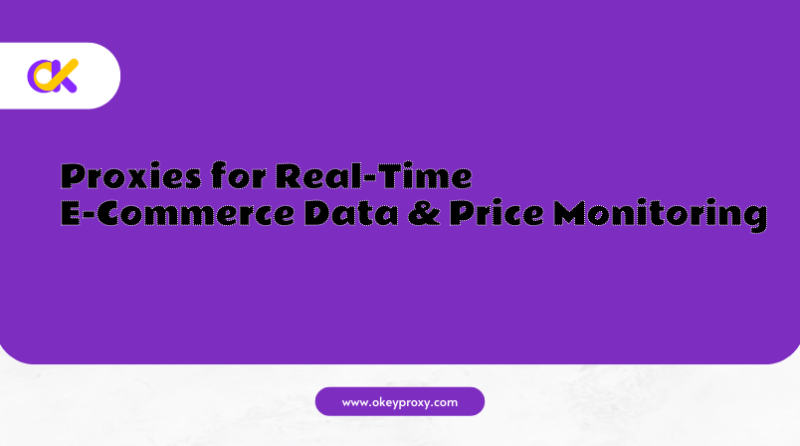Anzeigencode ist ein entscheidendes Element der digitalen Werbung, das die Anzeige von Werbung auf Websites und in Anwendungen ermöglicht. Er bindet Werbung in Webseiten oder Anwendungen ein, verfolgt Leistungskennzahlen und personalisiert die Anzeigenschaltung. Dieser Artikel befasst sich mit den Feinheiten des Ad-Codes, seiner Funktionalität und der Frage, wie verschiedene Strategien - einschließlich der Verwendung von Proxys - seine Effektivität verbessern können. Außerdem werden wir uns mit verwandten Themen wie der Verhinderung von Anzeigenbetrug, der dynamischen Anzeigenschaltung und der plattformübergreifenden Anzeigenverwaltung befassen.
Verständnis des Anzeigencodes
Was ist Ad Code Bedeutung
Was ist Ad Code? Die vollständige Form von Ad Code ist Werbecode. Er bezieht sich auf einen HTML-, JavaScript- oder anderen Programmiercode, der in eine Webseite oder Anwendung eingebettet ist, um Werbung anzuzeigen. Anzeigencode wird häufig von Werbenetzwerken oder -plattformen (z. B. Google AdSense) bereitgestellt, die in den HTML-Code einer Webseite oder in das Backend einer Anwendung eingebettet sind. Zu den wichtigsten Funktionen von Anzeigencode gehören:
- Anzeigenschaltung: Bestimmt die Platzierung und das Format von Anzeigen auf einer Webseite oder in einer Anwendung und stellt sicher, dass sie in den vorgesehenen Bereichen erscheinen.
- Verfolgung und Analyse: Erfasst Daten über Anzeigeninteraktionen, wie Impressionen, Klicks und Nutzerverhalten. Diese Daten sind für die Bewertung der Anzeigenleistung und des ROI unerlässlich.
- Targeting und Personalisierung: Ermöglicht die Schaltung zielgerichteter Werbung auf der Grundlage von Nutzerdaten, einschließlich Standort, Browserverlauf und Interessen. Dies erhöht die Relevanz der Werbung und die Nutzeraktivität.
Ein anderer Begriff: Anzeigencode im Export
Im Zusammenhang mit dem Export bezieht sich der Begriff "Anzeigencode" in der Regel auf den Code, der einem bestimmten Produkt oder einer Kategorie für Zoll- und Exportzwecke zugewiesen wird. Dieser Code hilft, die Dokumentation, Klassifizierung und Verfolgung der exportierten Waren zu rationalisieren. Eines der gebräuchlichsten Systeme hierfür ist der Code des Harmonisierten Systems (HS), ein international standardisiertes System von Namen und Nummern zur Klassifizierung von Handelswaren.
Beispiel für einen Anzeigencode (HS-Code):
- Elektronik: HS-Code 8542.39 für integrierte Schaltungen.
- Bekleidung: HS-Code 6109.10 für T-Shirts.
Anzeigencode-Vergleich
| Merkmal | Anzeigencode im Export | Anzeigencode in der digitalen Werbung |
|---|---|---|
| Zweck | Klassifizierung von Waren für Zoll und Export | Anzeigen in Websites oder Anwendungen einbetten |
| Gemeinsames System | HS-Codes, Zollklassifizierungs-Codes | Google AdSense, AdMob oder andere Werbenetzwerke |
| Verwendung | Exportdokumente, Zölle festlegen | Anzeigen ausliefern, Leistung verfolgen, Einnahmen erzielen |
| Anmeldung | Internationaler Handel, Logistik | Digitales Marketing, Web-Monetarisierung |
| Beispiel | HS-Code für den Export von Elektronik | AdSense-Code für die Anzeige von Werbebannern |
Wie Anzeigencode im Marketing funktioniert
Der Begriff Anzeigencode bezieht sich auf ein Skript oder ein Stück Code, das in eine Website eingebettet ist, um Werbung anzuzeigen. Es ermöglicht Website-Besitzern, Einnahmen durch Anzeigen zu generieren, indem sie eine bestimmte Art von Werbung einbinden, z. B. Bannerwerbung, Videoanzeigen oder kontextbezogene Anzeigen von Netzwerken wie Google AdSense, Amazon Ads oder anderen Adserving-Plattformen. Der Anzeigencode funktioniert in einer Reihe von Schritten:
-
Code-Integration
Die Entwickler integrieren den Anzeigencode in die Webseite oder Anwendung. Dieser Code wird in der Regel vom Werbenetzwerk generiert und enthält Parameter für die Anzeige von Werbung.
-
Anfrage an Ad Server
Wenn ein Nutzer eine Webseite oder App besucht, sendet der Anzeigencode eine Anfrage an den Anzeigenserver, die Informationen über das Gerät des Nutzers, seinen Standort und seine Surfgewohnheiten enthält.
-
Anzeigenauswahl und -zustellung
Der Anzeigenserver verarbeitet die Anfrage und wählt anhand der angegebenen Daten eine Anzeige aus. Die ausgewählte Anzeige wird dann auf der Webseite oder App ausgeliefert und an der angegebenen Stelle angezeigt.
-
Datenerhebung und Berichterstattung
Der Anzeigencode verfolgt die Nutzerinteraktionen und sendet Daten zur Analyse an den Anzeigenserver zurück. Anhand dieser Daten können Werbetreibende die Anzeigenleistung bewerten und fundierte Entscheidungen treffen.
Verbesserung der Effektivität von Anzeigencodes
-
Optimierung der Anzeigenplatzierung
Oberhalb des Falzes: Platzieren Sie Anzeigen dort, wo sie für die Nutzer sofort sichtbar sind, ohne dass sie scrollen müssen.
Kontextbezogene Relevanz: Passen Sie den Anzeigeninhalt an den umgebenden Inhalt an, um das Engagement zu erhöhen.
Anzeigendichte: Halten Sie die Anzeigenhäufigkeit in einem ausgewogenen Verhältnis, um die Nutzer nicht zu überfordern, was zu Anzeigenblindheit führen kann. -
Verbesserung der Anzeigenausrichtung
Nutzung von Benutzerdaten: Nutzen Sie Nutzerverhalten und demografische Daten, um personalisierte Werbung zu schalten.
Geografisches Targeting: Schneiden Sie Anzeigen auf den Standort des Nutzers zu, um die Relevanz zu erhöhen.
Verhaltensbasiertes Retargeting: Zeigen Sie Nutzern, die bereits mit Ihren Inhalten interagiert haben, Werbung an. -
Verbesserung der Qualität des Anzeigencodes
Ladegeschwindigkeit: Stellen Sie sicher, dass der Anzeigencode die Ladezeiten der Seite nicht verlangsamt. Optimieren Sie den Code, um Verzögerungen zu reduzieren.
Reaktionsfähiges Design: Verwenden Sie responsive Anzeigenblöcke, um sicherzustellen, dass Anzeigen auf allen Geräten gut angezeigt werden.
Kompatibilität: Testen Sie den Anzeigencode auf verschiedenen Browsern und Plattformen, um eine einheitliche Leistung zu gewährleisten. -
Erweiterte Anzeigenformate nutzen
Native Anzeigen: Integrieren Sie Anzeigen nahtlos in Inhalte, um sie weniger aufdringlich und ansprechender zu gestalten.
Interaktive Anzeigen: Verwenden Sie interaktive Elemente, um das Engagement und die Interaktion der Nutzer zu erhöhen.
Video-Anzeigen: Implementieren Sie Videoanzeigen, die die Aufmerksamkeit effektiver auf sich ziehen können als statische Bilder. -
Überwachung und Analyse
Leistung verfolgen: Verwenden Sie Analysetools zur Überwachung der Anzeigenleistung, der Klickraten und der Konversionsraten.
A/B-Tests: Führen Sie A/B-Tests durch, um verschiedene Anzeigenformate, Platzierungen und Designs zu vergleichen.
Strategien anpassen: Passen Sie Anzeigenstrategien auf der Grundlage von Leistungsdaten und Nutzerfeedback kontinuierlich an. -
Sicherstellung von Compliance und Datenschutz
Anzeigenstandards: Befolgen Sie die Branchenstandards für die Platzierung und den Inhalt von Anzeigen, um Probleme mit der Einhaltung von Vorschriften zu vermeiden.
Privatsphäre der Nutzer: Umsetzung von Maßnahmen zum Schutz der Privatsphäre und Offenlegung der Datenerfassungspraktiken gegenüber den Nutzern. -
Nutzung von Vertretungen für Anzeigentests
Vermeiden Sie Erkennung: Testen Sie Anzeigen von verschiedenen geografischen Standorten, ohne als verdächtig eingestuft zu werden.
Testen Sie Variationen: Stellen Sie sicher, dass Anzeigenvariationen in verschiedenen Regionen und IP-Adressen gut funktionieren.
Simulieren Sie echte Benutzer: Simulieren Sie das Verhalten und die Umgebung echter Benutzer, um genaue Ergebnisse zu erzielen. -
Fesselnde kreative Inhalte
Hochwertiges Bildmaterial: Verwenden Sie hochauflösende Bilder und professionelles Design, um Aufmerksamkeit zu erregen.
Klare Aufforderung zum Handeln: Fügen Sie überzeugende Handlungsaufforderungen ein, die die Nutzer zum Klicken auf die Anzeige bewegen.
Weitere Tipps mit zu berücksichtigendem Anzeigencode
1. Prävention von Anzeigenbetrug
Anzeigenbetrug ist ein großes Problem in der digitalen Werbung. Es handelt sich dabei um betrügerische Praktiken, die die Anzeigenkennzahlen aufblähen und Werbeausgaben verschwenden. Die Umsetzung von Strategien zur Verhinderung von Anzeigenbetrug ist entscheidend für die Aufrechterhaltung der Integrität von Werbekampagnen. Zu den gängigen Maßnahmen gehören:
- Erkennung von Klickbetrug: Verwendung von Algorithmen und maschinellem Lernen, um ungültige Klicks zu identifizieren und herauszufiltern, die von Bots oder böswilligen Akteuren erzeugt wurden.
- Eindrucksvolle Betrugsbekämpfung: Überwachung auf gefälschte Impressionen durch Analyse von Verkehrsmustern und Nutzerverhalten, um sicherzustellen, dass die Anzeigenaufrufe echt sind.
- Verifizierung durch Dritte: Beauftragung von Drittanbietern mit der Prüfung und Verifizierung von Anzeigenmetriken, um sicherzustellen, dass die Anzeigendaten korrekt und vertrauenswürdig sind.
2. Dynamische Werbeeinblendung
Bei der dynamischen Anzeigenschaltung wird der Anzeigeninhalt in Echtzeit auf der Grundlage von Nutzerdaten und kontextbezogenen Faktoren angepasst. Dieser Ansatz erhöht die Relevanz und das Engagement von Anzeigen, indem er auf individuelle Nutzerprofile zugeschnittene Werbung liefert. Zu den wichtigsten Aspekten gehören:
- Kontextbezogenes Targeting: Anpassung der Anzeigeninhalte an den Inhalt der Webseite oder App, um sicherzustellen, dass die Anzeigen für die aktuelle Umgebung des Nutzers relevant sind.
- Behavioral Targeting: Nutzung von Daten zum Nutzerverhalten, wie z. B. Browserverlauf und Kaufverhalten, um Anzeigen zu schalten, die auf die Interessen und Vorlieben der Nutzer abgestimmt sind.
- Bieten in Echtzeit: Nutzung von programmatischer Werbung, um Gebote für das Anzeigeninventar in Echtzeit zu platzieren, die Anzeigenplatzierung zu optimieren und die Rendite der Werbeausgaben zu maximieren.
3. Plattformübergreifendes Anzeigenmanagement
Die Verwaltung von Anzeigen über mehrere Plattformen hinweg kann eine Herausforderung sein, ist aber unerlässlich, um ein vielfältiges Publikum zu erreichen. Ein effektives plattformübergreifendes Anzeigenmanagement beinhaltet:
- Einheitliche Werbeplattformen: Nutzung integrierter Anzeigenverwaltungsplattformen, die mehrere Kanäle, einschließlich Web, Mobile und Social Media, unterstützen, um den Anzeigenbetrieb und die Berichterstattung zu optimieren.
- Konsistentes Messaging: Sicherstellen, dass die Werbemotive und -botschaften auf den verschiedenen Plattformen konsistent sind, um die Markenidentität zu stärken und die Wiedererkennung durch die Nutzer zu verbessern.
- Leistungsverfolgung: Überwachung der Anzeigenleistung auf verschiedenen Plattformen, um die Wirksamkeit zu bewerten, Trends zu erkennen und datengestützte Anpassungen der Anzeigenstrategien vorzunehmen.
Die Rolle von Proxyservern im Anzeigencode
Die Einbindung von Proxys in Anzeigencode-Strategien kann die Anzeigenleistung verbessern, vor Betrug schützen und die Zielgruppenansprache optimieren.
- Schutz der Privatsphäre: Maskierung der IP-Adressen von Nutzern zum Schutz der Privatsphäre und zur Verhinderung von Werbung, die auf dem Standort basiert.
- Umgehen Sie geografische Beschränkungen: Ermöglicht den Zugang zu regionsspezifischen Anzeigen durch Simulation verschiedener geografischer Standorte.
- Anzeigenüberprüfung und -test: Ermöglicht ein genaueres Testen der Anzeigenleistung von verschiedenen Standorten aus und trägt so zur Optimierung der Anzeigenschaltung und -wirksamkeit bei.
- Bekämpfung von Anzeigenbetrug: Identifizierung und Blockierung verdächtiger IP-Adressen, um die Auswirkungen betrügerischer Aktivitäten durch Analyse der Verkehrsmuster zu verringern.
- Datenerhebung und -analyse: Scraping von Daten aus verschiedenen Quellen ohne Blockierung, Verteilung der Anfragen über verschiedene IP-Adressen und Umgehung der von den Datenquellen auferlegten Ratenbeschränkungen.
Richtige Proxy-Auswahl für Ad Code Management
Berücksichtigen Sie bei der Integration von Proxys in die Anzeigencodeverwaltung:
- Proxy-Typ: SOCKS5-Proxys werden aufgrund ihrer Flexibilität und ihrer Fähigkeit, verschiedene Arten von Datenverkehr zu verarbeiten, bevorzugt. Sie bieten eine bessere Anonymität und unterstützen verschiedene Protokolle.
- Leistung und Verlässlichkeit: Wählen Sie einen Proxy-Anbieter, der Hochgeschwindigkeitsverbindungen und einen zuverlässigen Service anbietet, damit die Tests und die Leistung der Anzeigen nicht beeinträchtigt werden.
- Geografischer Geltungsbereich: Eine große geografische Reichweite ermöglicht eine umfassende Prüfung und Optimierung. Dienstleistungen wie OkeyProxy bieten eine umfassende globale Abdeckung, die ein effektives Anzeigenmanagement ermöglicht.

Kostenloser Test mit ausgezeichneten Proxies jetzt!
Schlussfolgerung
Anzeigencode ist eine wesentliche Komponente der digitalen Werbung, die die Anzeige und Verwaltung von Anzeigen auf Websites und in Anwendungen erleichtert. Die Verbesserung der Effektivität des Anzeigencodes beinhaltet die Bewältigung von Herausforderungen wie Anzeigenbetrug, die Nutzung dynamischer Anzeigeneinblendungen und die Verwaltung von Anzeigen über mehrere Plattformen hinweg. Proxyserver bieten darüber hinaus wertvolle Vorteile wie den Schutz der Privatsphäre, geografische Flexibilität und die Optimierung der Anzeigenleistung. Durch den Einsatz dieser Strategien und Tools können Werbetreibende ein präziseres Targeting, einen besseren ROI und erfolgreiche Werbekampagnen erzielen.





